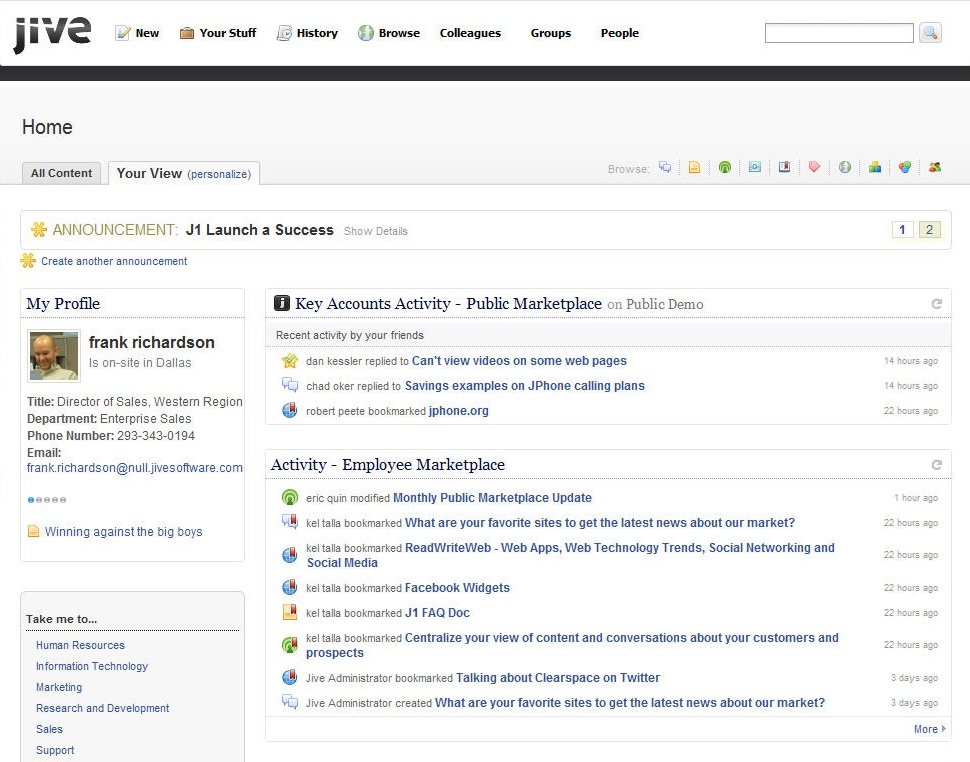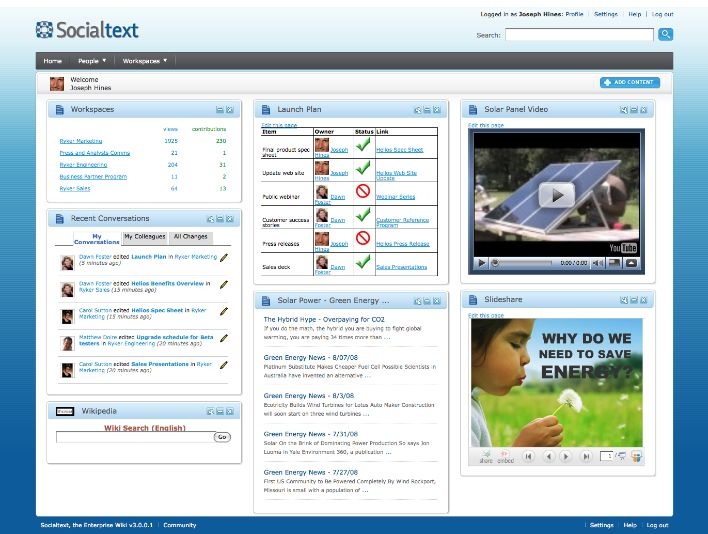Now Business Is Social from Jive Software on Vimeo
I’m not sure you can announce your leadership in a category, but that’s what Jive has done with the announcement of its Social Business Software application suite — Jive SBS 3.0. The product does bring a deliberate focus to the logical organizational interests of a social enterprise– namely, Employee Engagement, Marketing & Sales, Customer Support, and Innovation. With that segmentation, along with an overhaul of its Jive Clearspace 2.5 released last summer, the software has been reborn– perhaps in the original image of its founders, according to Sam Lawrence, Chief Marketing Officer. With this new release, Jive is stridently targeting IBM and Microsoft customers with what could prove to be a superior solution.
Lawrence is the beloved Enterprise 2.0 author of the “Go Big Always” blog. For years, he has been framing the issues facing the “category” in entertaining and educational ways. For the wholesale formulation of the category (re)definition, Lawrence solicited help from customers, industry analysts, and other influencers. Lawrence sees the market space in terms of a vast social capital marketplace where business intelligence meets interpersonal relationships. It’s powerful stuff and the software now enables levels of insight that were unavailable from one company until now. The emphasis Jive is taking toward effecting business results is also refreshing.
The key new enhancements include:
- Bridging: The ability to view employee, customer, and partner communities in a centralized, customizable dashboard.
- Analytics: Indicators that cull from a data warehouse and track activities in the enterprise
- Insights: Detailed reporting including sentiment and engagement
- Video: Secure, high quality video for conversation and training
- Social Bookmarking: Capture and share content from internal and external sources
- User Experience: A refreshing, simple and elegant look and feel that spurs adoption
Jive says beta versions of its new product suite are in the hands of customers today. We’ll be looking for customer feedback on how the transition is going. In the meantime, Jive has taken a tremendous leap ahead. I would have liked to have seen an enterprise micro-blogging capability, such as Socialtext recently announced with its AIR-based Signals, or more comprehensive wiki capability for deeper collaboration among work teams. With that said, however, I give Jive much credit for taking the lead on forcing a category definition and building its future on the back of that architected vision.


 Atlassian
Atlassian